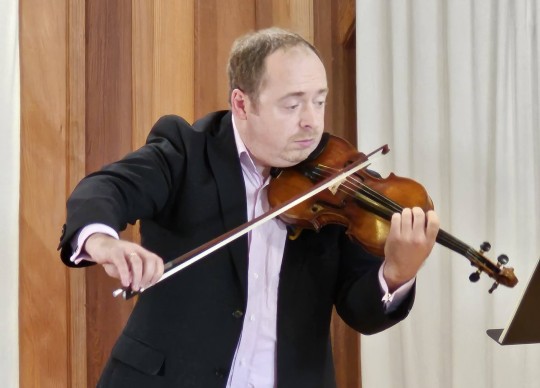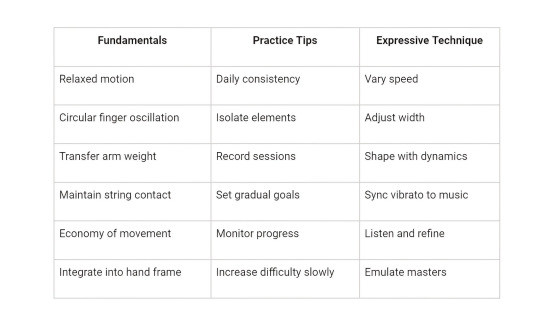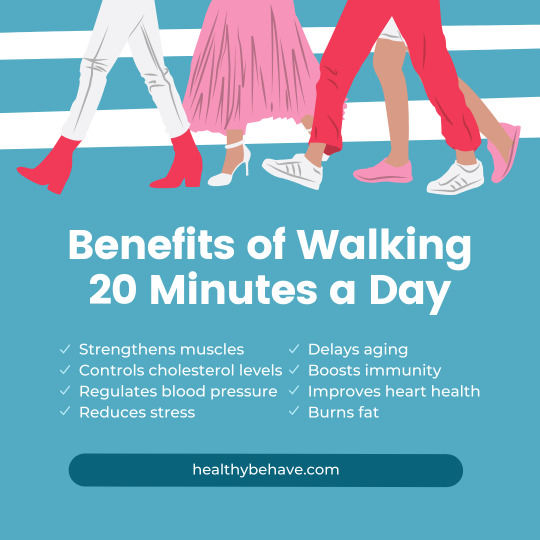#Daily exercise routine
Video
youtube
"Secrets Revealed: The Ultimate Fitness Hack You Need to Know" #exercise..
10 Best Weight Loss Hacks to Stop Overeating and Lose Weight Fast.
#youtube#fitnessmantram#loseweight#fitness#workout#exercise#daily workout routine#daily exercise routine#fitness routine#workout challenge#fitness challenge#weight loss challenge#fitness model
0 notes
Text
Crafting a Transformative Healthy Daily Routine: Your Path to Wellness
In the hustle and bustle of modern life, it's easy to neglect our well-being while tending to various responsibilities. But adopting a healthy daily routine can have a profound impact on our physical, mental, and emotional well-being. Whether you're a student, a working professional, or someone seeking a more balanced life, here's a comprehensive guide to help you create a transformative healthy daily routine.
1. Rise and Shine with Intent: Morning Rituals The way you start your day sets the tone for the rest of it. Begin by waking up at a consistent time to regulate your body's internal clock. Engage in activities that promote mindfulness and positivity, such as meditation, deep breathing exercises, or journaling. Avoid immediately reaching for your phone or electronic devices to prevent a rush of information before you're mentally prepared.
2. Nourish Your Body: Balanced Breakfast Breakfast is often touted as the most important meal of the day, and for good reason. Fuel your body with a nutritious breakfast that includes a mix of complex carbohydrates, protein, and healthy fats. Opt for whole grains, fruits, yogurt, eggs, or smoothies to provide sustained energy throughout the morning.
3. Move and Groove: Physical Activity Incorporate exercise into your daily routine to boost your physical fitness and enhance your mood. Whether it's a brisk walk, a yoga session, or a full gym workout, find an activity you enjoy and make it a non-negotiable part of your day. Regular exercise improves cardiovascular health, increases metabolism, and releases endorphins, the "feel-good" hormones.
4. Structured Work (or Study) Time: Maintain Productivity For those with professional or academic commitments, structuring your work time is crucial. Break your day into focused work intervals, such as the Pomodoro technique (25 minutes of work followed by a 5-minute break). This approach enhances productivity while preventing burnout.
5. Mindful Consumption: Balanced Meals and Hydration Make conscious choices about what you eat and drink throughout the day. Consume a variety of nutrient-rich foods, including lean proteins, colorful vegetables, and healthy fats. Stay hydrated by drinking water regularly. Limit processed foods, sugary snacks, and excessive caffeine.
6. Mental Recharge: Short Breaks and Hobbies Intersperse your day with short breaks to relax your mind. Engage in hobbies you're passionate about, whether it's reading, playing a musical instrument, or practicing a craft. These moments of mental recharge enhance creativity and reduce stress.
7. Connect and Communicate: Social Interaction Human beings thrive on social connections. Dedicate time to interact with friends, family, or colleagues. Engaging in meaningful conversations or spending quality time with loved ones can uplift your spirits and provide emotional support.
8. Evening Wind-Down: Unplug and Relaxation As your day winds down, shift into relaxation mode. Limit screen time before bed to avoid the disruption of sleep-inducing hormones. Instead, read a book, take a warm bath, or practice gentle stretching. A calm evening routine sets the stage for a restful night's sleep.
9. Prioritize Sleep: Restorative Rest Sleep plays a pivotal role in overall health. Aim for 7-9 hours of quality sleep each night. Create a sleep-conducive environment by keeping your bedroom dark, quiet, and at a comfortable temperature. Establish a consistent sleep schedule to regulate your body's internal clock.
10. Reflection and Gratitude: Nighttime Journaling End your day by reflecting on your accomplishments and expressing gratitude. Write down a few things you're thankful for and acknowledge the progress you've made, no matter how small. This positive practice sets the tone for the next day.
Incorporating these elements into your daily routine takes time and commitment, but the benefits are worth the effort. A healthy daily routine can improve your physical health, enhance your mental well-being, and contribute to a more balanced and fulfilling life. Remember, it's not about perfection, but rather about progress and consistency on your journey to wellness.
#Healthy Lifestyle#Daily Routine#Wellness#Self-Care#Mindfulness#Balanced Living#Fitness#Nutrition#Productivity#Exercise#Mental Health#Positive Habits
93 notes
·
View notes
Text
I like doing quick at home workouts especially on days where I have to stay on the computer for most of the day.
These are some of the YouTube channels I’ll follow routines from.
🧘♀️🤸♀️🏋️♀️🏃♀️
#exercise#womens health and fitness#fitness#workout#health tips#health and wellness#women health#healthy lifestyle#healthy living#health is wealth#pilatesworkout#yoga pilates#pink pilates girl#work out#morning walks#self care routine#gym routine#exercise routine#daily routine#advice#youtube recommendations#youtube
106 notes
·
View notes
Text



shit grip strength
#to be fair he improves over the years#he has yet to start his 'daily exercise routine' or whatever#scribbles#gravity falls#ford pines#fiddleford mcgucket
671 notes
·
View notes
Text
Daily reminder:
overthinking -> write
anxious -> move
tired -> read
confused -> walk
sad -> exercise
#daily life#daily reminder#daily routine#reminder#self love#important#manifesting#manifesation#inspiration#reading#walking in nature#motivation#overthinking#anxeity#confused#tired#movement#long reads#exercise
5 notes
·
View notes
Text
I think an important part of the transition process is loving yourself at every stage. Even if you don't pass. Even if you're not the shining image of what you want to accomplish. That way on bad days you look at yourself in the mirror and you still feel that little warm spark in your chest.
Right now, I'm being put in a situation where I have to conform to the standards of my sex, and I can touch and look at myself and still feel a sense of pride, even after ED and crisis inspired sleepless nights.
Our bodies are containers for the soul. It can be a hell or a home, and I think I've made mine my home.
#also you should really drink water#i mean it! and exercise daily#and form a self care routine#and form an alpha chad / girlboss mentality#transgender#nonbinary#jacquet.txt
8 notes
·
View notes
Text

Crafting a Balanced Workout Routine: Key Components and Strategies
Introduction
A well-rounded workout routine is essential for overall health and fitness. Whether your goal is to build muscle, improve endurance, or simply stay active, incorporating a variety of exercises is key to achieving success. In this article, we'll explore the elements of a balanced workout routine and provide strategies for creating one that suits your needs and goals.
1. Understanding the Components
Before diving into creating a workout routine, it's important to understand the key components that make it balanced:
Cardiovascular Exercise: Cardio workouts elevate your heart rate, burn calories, and improve cardiovascular health. Examples include running, cycling, swimming, and brisk walking.
Strength Training: Strength training involves exercises that target specific muscle groups to build strength, increase muscle mass, and improve bone density. This can include weightlifting, bodyweight exercises, and resistance band workouts.
Flexibility and Mobility: Flexibility exercises improve range of motion and joint health, while mobility exercises enhance functional movement patterns. Yoga, Pilates, and stretching routines are excellent for improving flexibility and mobility.
Rest and Recovery: Adequate rest is crucial for muscle repair and growth. Make sure to incorporate rest days into your routine to prevent overtraining and allow your body to recover.
2. Setting Your Goals
Before creating your workout routine, define your fitness goals. Are you looking to lose weight, gain muscle, improve endurance, or enhance overall health? Tailoring your routine to your specific goals will help you stay focused and motivated.
3. Designing Your Routine
Once you've identified your goals, it's time to design your workout routine. Here's how to create a balanced plan:
Include Variety: Incorporate a mix of cardiovascular exercise, strength training, and flexibility work. This variety keeps your workouts engaging and targets different aspects of fitness.
Set Priorities: Depending on your goals, prioritize certain types of exercises. For example, if you're aiming to build muscle, allocate more time to strength training. If weight loss is your primary goal, emphasize cardio workouts.
Schedule Regular Rest Days: Rest and recovery are essential for preventing injury and allowing your body to adapt to training. Aim for at least one or two rest days per week, depending on your activity level and intensity.
Progressive Overload: Continuously challenge your body by gradually increasing the intensity, duration, or weight of your workouts. This progression stimulates muscle growth and improves fitness levels over time.
Listen to Your Body: Pay attention to how your body responds to exercise. If you're feeling fatigued or experiencing pain, adjust your routine accordingly and give yourself adequate rest.
4. Sample Workout Routine
Here's an example of a balanced workout routine:
Monday: Strength training (full-body workout)
Tuesday: Cardio (30 minutes of running or cycling)
Wednesday: Rest or light yoga/stretching
Thursday: Strength training (upper body focus)
Friday: Cardio (interval training or HIIT)
Saturday: Flexibility/mobility work (yoga or Pilates)
Sunday: Rest
Feel free to adjust the days and activities based on your schedule and preferences.
Conclusion
Creating a balanced workout routine involves incorporating a variety of exercises to target different aspects of fitness. By setting clear goals, prioritizing key components, and listening to your body, you can design a routine that is effective, enjoyable, and sustainable. Remember to stay consistent, track your progress, and adjust your routine as needed to continue challenging yourself and reaching your fitness goals.
#health#fitness#workout#healthy lifestyle#healthcare#health tips#health and wellness#healthy living#wellness#exercise#motivation#daily routine#health & fitness#weight loss#health is wealth
3 notes
·
View notes
Text
Sometimes I see other peoples self inserts and sonas that are way different from their real selves, like alien abominations with several limbs and eyes n stuff, and I’m like oh that’s great!
But when do it I feel cringe. Like. Typical little boy drawing himself with muscles and a few extra inches of height. EuGH.
I just want him to look masculine 😭
#it’s because I’m TRANS#I’ve been wanting to start working out for a while#but idk where to start#i used to have the SLIGHTEST bit of muscle in my arms when I was in marching band#daily stretches and workout routines#but lost it when I quit#i cant hit the gym bc I don’t have a car yet#and the exercise equipment at my house is all for legs#I HAVE ENOUGH LEG#I NEED ARM#anyways
5 notes
·
View notes
Text


arms were lookin biiiig today 🤩
worked on hip and shoulder strengtheners today at the gym. lots of banded exercises. wrist pain stopped me short on pulldowns and shoulder pain limited my shoulder press but I backed off as soon as I felt sharp pain and now that I’m home everything feels ok. trying not to be mad at my body, and overall it was a good session. and no sciatic pain so there has still been good progress 😊
on another note the ghost preworkouts are like crackkkkk. and taste so fucking good 🤤 I don’t use pre regularly but now and again an energy drink is just fun lol. getting turnt this friday I guess 😂
happy long weekend everyone!!
#gym diary#gym life#gym routine#daily log#daily update#fitness journey#photo diary#fitblr#bulking#mirror selfie#gym pics#ghost#ghost energy#ghost protein#energy drink#preworkout#hip exercise#shoulder mobility#squat university#flexing#body acceptance#shoulder pain#me
19 notes
·
View notes
Text
Spent all day watching elementary and then drew a little bit. Did not go for a walk or do any exercise because i figured doing so would be "bad for my health" since im down with the rona. I need to chew through walls.
#not fallout#kal talks#consistent exercise has done wonders for my daily routine and health and now im scrabbling at the walls like BSKBDISNKSBDO#i have a cough so i cant but im DYING
3 notes
·
View notes
Text
#fitness#weight loss#exercise#weightloss#workout#exercise fitness#daily fitness#daily exercise routine
1 note
·
View note
Text
#happy new year 2024#new year goals#Gratitude Journal#Try a New Hobby#Practice Daily Meditation#Start a Daily Exercise Routine#socialise#Travel More#Prioritize Self-Care#Foster a Positive Mindset
2 notes
·
View notes
Text
Master Expressive Violin Vibrato with Pro Tips and Daily Exercises

Vibrato is an essential violin technique that adds expression and emotion to the sound. Mastering a flexible, controlled vibrato requires daily focus and targeted exercises. This in-depth guide provides tips to develop violin vibrato technique properly along with sample practice routines to enhance mastery.
Vibrato brings the violin to life with passion and color. Learning efficient motion and integrating it musically into playing elevates phrasing. With patience and deliberate practice, any violinist can develop an expressive, shimmering vibrato. Let's get started!

What is Violin Vibrato?
Vibrato is a rapid, constant fluctuation in pitch that adds expression and interest to violin notes. It gives the characteristic warmth and personality to the sound.
Vibrato is produced by small, regular finger motions while maintaining contact with the string. This causes slight variations in pitch that enhance tone. Vibrato can also be created using wrist or arm movements.
There are several types of violin vibrato:
Finger vibrato - subtle fingertip rocking back and forth
Wrist vibrato - flickering hand motion at the wrist
Arm vibrato - larger oscillation from the elbow
Violinists utilize different speeds and widths of vibrato for varied effects. Mastering control of this technique is a milestone of accomplished violin playing.
How Violin Vibrato Creates Fluctuating Pitch
Violin vibrato works by slightly shortening and lengthening the string length through finger motion:
Rocking the fingertip back lifts the string slightly, shortening the length, and raising the pitch
Rocking forward lowers the string, increasing the length, and lowering the pitch
This creates an oscillating fluctuation between higher and lower pitches
The result is a rich, warm pulsating sound at the main note pitch
This pitch wavering adds interest, emotion, and vocal-like sounds.
Notation for Violin Vibrato
Composers use the following notation to indicate vibrato:
Wavy line above or below note
"Vib." or "non-vib." written instructions
Changes in line width show variations in speed or width
Listen to recordings to interpret the intended vibrato style.
Benefits of Developing Strong Vibrato Skills
Here are some of the key benefits that vibrato brings to violin playing:
Adds beautiful warmth and richness to the tone quality
Allows dynamic, nuanced musical expression
Enables tone color variations from bright shimmers to romantic intensity
Elevates phrasing and makes the violin "sing"
Prevents monotony by adding interest to long notes
Provides an outlet for emotion through the instrument
Benchmark of advanced violin technique mastery
Makes amateur playing sound more professional
Vibrato is not just an add-on effect - it becomes an integral part of the violinist's sound. Mastering expressive vibrato technique elevates playing to a more professional level.
More Than Just Ornamentation
Vibrato is sometimes mistakenly viewed as just ornamentation added onto notes. But truly mastered vibrato:
Becomes an unconscious, integral part of sound production
Is used expressively on virtually every sustained note
Enhances the core tone, not just decorates it
Helps communicate phrasing, emotion, and musicality
Aim to make vibrato a natural extension of your artistic intentions, not just a technique attached to notes.
Violin Vibrato is Expected
For aspiring violinists, here’s some motivation:
Audiences, teachers, and fellow musicians expect violinists to use vibrato
Lack of vibrato sounds amateur, dull, or emotionless
The Vibrato technique is required for advanced repertoire
Using vibrato well projects passion and musicality
Put in the work, and your effort will be rewarded with rich sounds.
Proper Violin Vibrato Technique Fundamentals
Developing efficient, flexible vibrato requires establishing these core techniques:
Relaxed, supple wrist and arm motion
Small, circular fingertip rocking movement
Completely smooth, even oscillation between slightly raised and lowered finger positions
Maintaining constant contact between fingertip and string
Allowing arm weight to transfer through the finger to the string
Using the entire forearm, not just the wrist or hand
Integrating motion into the hand frame without tension or extra motion
Slow, mindful practice establishes proper motion and feel. Vibrato must become second nature to use expressively. Master the basics first before attempting to vary vibrato effects.
Relaxation is Crucial
Tension hinders vibrato development. Always monitor for:
Tight, rigid wrist, arm, or shoulder
Gripping motion in the hand
Pressing fingers down harshly on strings
Collapsing knuckles or bent fingertips
Relax muscles fully. Let arm weight flow into the fingertip.
Efficient, Economical Motion
Strive for:
Minimal extraneous motion in hand or arm
Fingertip moves slightly up and down, hand frame stays steady
Smooth circles, not back-and-forth or diagonal rubbing
Just enough motion to fluctuate pitch, not more
Any tension or extra motion inhibits speed and flexibility.
Useful Daily Exercises for Improving Violin Vibrato
Dedicated daily practice of targeted vibrato exercises builds technique efficiently. Here are some useful drills:
Flexibility and Motion Exercises
Gently roll wrists in circles to increase suppleness
Stretch wrists carefully within a comfortable range of motion
Massage forearms and wrists to relax muscles
Rotate arms at the elbow to prepare for arm vibrato
Basic Finger Motion Practice
While seated, tap fingertips together in a controlled, pulsating rocking motion
Start with a slower tempo, increase finger speed over time
Focus on maintaining completely steady, even oscillation
Finger Rolls on the Violin
With violin supported, place finger on string with normal frame
Roll fingertip evenly up and down while keeping contact with the string
Control speed and narrow the motion as coordination develops
Vibrato on Open Strings
Apply basic vibrato finger motion to open strings
Start very slowly and gradually increase the oscillation speed with the metronome
Use arm weight to allow motion to transfer through the finger to the string
Integrating Vibrato into Scales and Songs
First perfect notes, shifts, and intonation without vibrato
Add vibrato on long-held notes at the ends of phrases
Increase the amount of vibrato as technical skill improves
Use vibrato stylistically to complement the music
Isolating Each Element
Practice aspects separately before combining:
Flexibility drills only
Basic finger motion only
Finger roll on the violin without a sound
Open string vibrato focus
Add vibrato sparingly to the repertoire
This develops and ingrains proper technique.
Developing an Expressive, Musical Violin Vibrato
Once the basics are established, work on varying your vibrato for expressive effects:
Adjust oscillation speed for different impacts - slow can be sweet, fast more intense.
Modify width from very narrow vibrato to wide, dramatic shimmers.
Add accents or crescendos/decrescendos during vibrato notes.
Sync vibrato with phrase shaping, dynamics, and emotions of the music.
Listen to recordings of great violinists to inspire artistic vibrato use.
With mastery, vibrato becomes an intuitive tool for highlighting the music's phrasing and passion. An expressive vibrato transports listeners.
Speed, Width, and Shape
To vary vibrato:
Faster = more intensity and excitement
Slower = sweetness and meditation
Wider = bigger dramatic shimmers
Narrower = delicate flutter
Shape vibrato with crescendos, accents, and varied speed/width
Syncing with Music
Sync choices to phrasing or emotion:
Slow, narrow vibrato on soft lyrical sections
Pulsing, passionate vibrato on loud, dramatic phrases
Adding/increasing vibrato towards a climax note
Let the music influence your vibrato decisions.
Tips for Practicing Violin Vibrato Exercises

Here are some useful tips for getting the most out of daily vibrato practice:
Mindful Repetition
Thoughtfully repeat each exercise, focusing intently on the proper motion. Quality matters more than quantity. Don't allow flaws to get ingrained.
Use a Metronome
Set the metronome slow and increase tempo gradually over time to monitor oscillations. A steady rhythm is key.
Record Yourself
Record videos to watch your hand motion and analyze your vibrato sound. Strive for continuous, flawless oscillations.
Take Breaks
Frequent short sessions are better than marathon practice. Give muscles recovery time to increase flexibility safely.
Increase Difficulty Slowly
Start on open strings with easy whole notes. Only advance to a more complex repertoire, dynamics, and tempi once simple is mastered.
Listen Critically
Develop your “vibrato ear.” Identify and correct any unevenness, nervous shaking, or lack of continuity.
Stay Patient and Positive
Don’t get discouraged. Daily dedication leads to vibrato success. Celebrate small improvements.
Consistent, attentive exercises ingrain proper vibrato technique automatically over time.
Troubleshooting Common Violin Vibrato Problems
Here are solutions to some typical challenges students face:
Uneven, shaky vibrato: Relax wrist and arm fully. Move just the fingertip, not the whole hand. Control speed with a metronome.
Not continuous: Maintain constant finger rocking. Don't stop/start oscillation. Eliminate any pauses.
Finger loses contact: Touch the string very lightly. Allow arm weight to transfer through the fingertip.
Sounds too wide/narrow: Adjust finger motion width and listen critically to match music.
Hand tenses up: Check for tension. Shake hands out. Soften grip.
Pressing too hard: Light fingertip contact. Move arm weight into rocking finger.
Adding vibrato late: First practice note change without vibrato. Then add immediately when changing notes.
Analyze issues, isolate elements, and do focused exercises to correct them.
Integrating Vibrato into Violin Repertoire
One fundamental technique is established through exercises, start incorporating vibrato into varied repertoire:
Add vibrato to long notes initially, then expand to more notes as skills improve
Prioritize vibrato on emphasized notes like at the ends of phrases
Use appropriate speed and width for the piece's mood and style
Avoid tension by keeping a relaxed motion established in exercises
Let vibrato enhance the music's phrasing, not obscure it
Gradually increase vibrato as technical control develops. Use it to accentuate musical ideas.
Choosing Vibrato Points
When deciding where to add vibrato:
Vary it more in slow lyrical sections, and less in fast technical passages
Prioritize long notes first to emphasize passion
Highlight climax notes at the ends of phrases
Use selectively for contrast between non-vibrato and vibrato notes
Listen and experiment. Let the music guide your expressive choices.
Developing Consistency in Practice
Achieving an expressive vibrato requires dedication through daily practice. Here are tips:
Make it a Routine
Commit to regular short sessions - 10 minutes daily is ideal
Consistency over time brings cumulative improvement
Track and Measure Progress
Record sessions to compare against past vibrato attempts
Note tempo markings of metronome settings you can handle
Quantify measures like oscillation speed, width, duration
Set Gradual Goals
Add one more note with vibrato
Increase metronome speed by 1 notch
Sustain vibrato for 2 extra beats
Analyze and Refine
Review recordings, and identify issues to improve
Compare sound to professional vibrato examples
Adjust technique and repeat focused exercises
Celebrate Small Wins
Recognize any sign of progress
Avoid getting discouraged if advancing slowly
Remind yourself success comes through practice over time
Fostering a growth mindset keeps you moving forward. Consistency is key.
Vibrato Exercises to Include in Daily Practice Routine

To simplify establishing a regular practice routine, here are suggested vibrato exercises to cycle through daily:
Monday
Wrist rolls, arm circles, stretching (5 minutes)
Basic finger motion at increasing metronome tempi (3 minutes)
Open D string vibrato whole notes (2 minutes)
Tuesday
Wrist/arm massage, fingertip tapping (5 minutes)
Rolls on all open strings, one string at a time (3 minutes each)
Apply vibrato to open A and E strings (2 minutes each)
Wednesday
Wrist and arm flexibility drills (5 minutes)
Finger rolls on each string, half note duration (3 minutes each)
Vibrato octave scales on D and A strings (2 minutes each)
Thursday
Arm rotations, knuckle stretches (5 minutes)
Vibrato finger taps at a fast tempo (3 minutes)
Add vibrato to repertoire pieces (5 minutes)
Friday
Full relaxation and massage of arms (5 minutes)
Advance metronome speed on open string whole note vibrato (3 minutes)
Play repertoire pieces with added vibrato (5 minutes)
Saturday
Flexibility exercises for wrist and arm (5 minutes)
Open string vibrato with varying speeds (3 minutes)
Practice vibrato in challenging repertoire sections (5 minutes)
Sunday
Gentle stretches, wrist rolls, fingertip tapping (5 minutes)
Play repertoire pieces from start to finish with added vibrato (10 minutes)
Cycling through a sequence like this ingrains skills through consistency. Adjust and expand exercises as you progress.
Putting it All Together
Learning violin vibrato requires diligent daily practice of proper relaxed technique. Isolate elements like flexibility, basic finger motion, applying to open strings, and adding judiciously to the repertoire. Listen critically and assess recordings of your progress. Using expressive, musical vibrato will elevate your level of playing and unlock the violin’s full tonal palette. With patience and consistency, work through challenges one by one. The beautiful reward of a flexible, singing vibrato is well worth the effort.
Let me know if you would like me to expand or modify any part of this comprehensive vibrato guide. Please share any feedback on areas I can improve. I aimed to thoroughly cover how to develop excellent violin vibrato techniques through dedicated practice.
FAQ
What is the proper violin vibrato motion?
A relaxed, circular rocking of the fingertip that transfers arm weight into the string to create a fluctuating pitch.
How can you practice violin vibrato efficiently?
Isolate aspects like flexibility, basic motion, and open strings. Add judiciously to the repertoire. Record and assess your progress.
How do you vary vibrato for musical expression?
By adjusting speed, and width, adding dynamic shapes, and syncing choices to the phrasing and mood of the music.
What are some common vibrato challenges and how to fix them?
Uneven or shaky vibrato - relax your arm and control your speed. Hand tensing up - release grip, reduce pressing.
How should you choose which notes to add vibrato to?
Prioritize long notes, ends of phrases, and climaxes. Consider the mood and style of the music.
How long does it take to develop a good violin vibrato technique?
It requires consistent daily practice over months or years. Have patience and celebrate small achievements.
Why is recording yourself important?
Analyzing recordings helps identify and correct any technical flaws before they get ingrained.
#Violin Vibrato Techniques#Expressive Violin Playing#Advanced Violin Skills#Vibrato Practice Exercises#Musical Expression#String Instrument Techniques#Violin Performance Tips#Classical Music Training#Violin Finger Techniques#Violin Teaching Methods#Daily Violin Practice#Violin Warm-Up Exercises#Mastering Vibrato Speed#Vibrato Width Control#Emotional Phrasing on Violin#Violin Technique Improvement#Artistic Violin Performance#Violin Tone Enrichment#Professional Violinist Tips#Violin Practice Routine
2 notes
·
View notes
Text
.
#when i try to implement exercise as a daily routine (for maybe a week before i give up again) i always get in my head about#doing things 'wrong' or doing non effective exercises#but then i remember that moving at all is infinitely more effective then lying in bed so#even if i do 4 squats and then cry thats something !!! god damn it#Anyway im trying to implement again but honestly with my track record im never too confident
9 notes
·
View notes
Text

Click here to watch the video: https://youtu.be/f0FB5s3bWJU
#morning walk#walking in nature#walkingtime#walking tour#walkingbikingtours#walk#walking wake#exercise#daily routine
3 notes
·
View notes
Text
25 notes
·
View notes